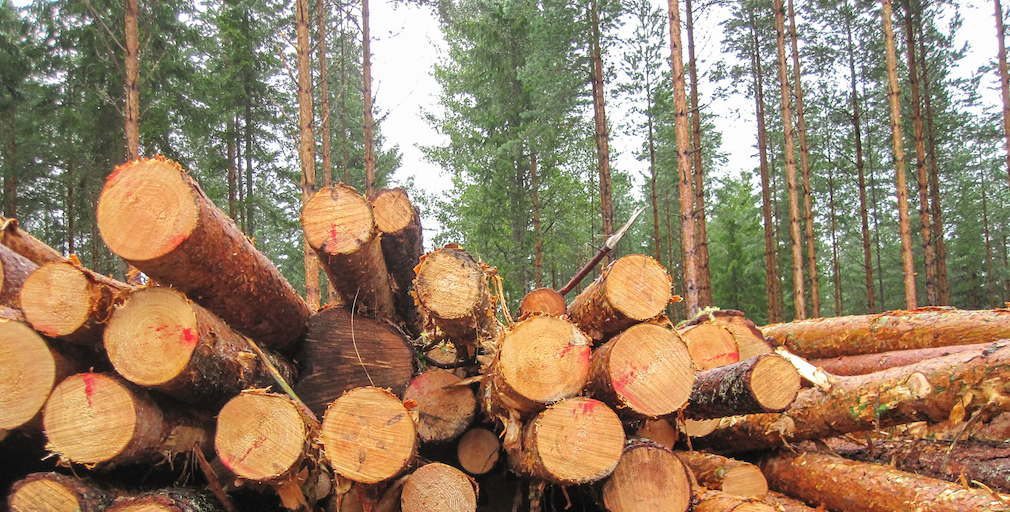The lumber war between the U.S. and Canada goes way beyond the new tariff on lumber that U.S. Commerce Secretary Wilbur Ross announced on Monday.
This latest update stems from an announcement Ross made on Monday that his agency will impose new anti-subsidy tariffs, averaging 20%, on Canadian softwood lumber imports, according to a Reuters article by David Lawder.
So what is the main industry using lumber from Canada? Homebuilders, who naturally aren't thrilled with the tariff.
First things first, though, Jen Skerritt published an informative Q&A on what the two countries are fighting about. Here are two questions the article addressed for background.
1. What’s the battle over?
The U.S. lumber industry alleges Canadian wood is heavily subsidized and that imports are harming American mills and workers. Canadians argue the U.S. depends on its lumber for home construction and won’t be able to meet demand without its neighbor to the north. It’s a rift that goes back decades.
2. So why is it flaring now?
A group representing U.S. companies filed a petition in November asking Washington to impose punitive tariffs. The U.S. Commerce Department announced April 24 that it will levy countervailing duties ranging from 3% to 24.1% on Canadian lumber producers including West Fraser Timber Co.
Also, it’s helpful to know that “softwood lumber is made from trees that have cones, such as spruce, pine and fir. Canada’s biggest export market is the U.S., where it is primarily used in home construction,” the article stated.
As expected, the National Association of Home Builders, the trade group that represents more than 140,000 members involved in home building, disagrees with Ross’ decision.
NAHB put out a release that denounced the decision, saying it will harm American homebuyers, consumers and businesses while failing to resolve the underlying trade dispute between the two nations.
"NAHB is deeply disappointed in this short-sighted action by the U.S. Department of Commerce that will ultimately do nothing to resolve issues causing the U.S.-Canadian lumber trade dispute but will negatively harm American consumers and housing affordability," said NAHB Chairman Granger MacDonald, a home builder and developer from Kerrville, Texas.
NAHB broke down the lumber numbers.
Approximately 33% of the lumber used in the U.S. last year was imported, with the bulk of the imported lumber – more than 95% — coming from Canada.
So how does this looks in terms of housing costs?
It takes about 15,000 board feet to build a typical single-family home and the lumber price increase in the first quarter of this year has added almost $3,600 to the price of a new home, NAHB stated.
"If the 20% lumber duty remains in effect throughout 2017, NAHB estimates this will result in the loss of nearly $500 million in wages and salaries for U.S. workers, $350 million in taxes and other revenue for the governments in the U.S. and more than 8,200 full-time U.S. jobs. Lumber prices have already jumped 22% since the beginning of the year, largely in anticipation of new tariffs, adding nearly $3,600 to the price of a new single-family home,” said MacDonald.
"This means that imports are essential for the construction of affordable new homes and to make improvements on existing homes," said MacDonald.
NAHB expanded on why this issue is flaring up now, stating that the trade agreement that has governed Canadian imports of softwood lumber since 2006 effectively expired at the end of 2016.
It also noted, “Uncertainty surrounding a new trade pact is the primary catalyst for the 22% spike in the Random Lengths Composite Price Index for lumber since the beginning of the year.”
Homebuilding stocks took a dive Tuesday morning, with the S&P 500 Homebuilding Index down 1.4%, according to an article in Business Insider by Jonathan Garber.
Rather than the way the U.S. is going about solving the problem, NAHB believes the best way to resolve this trade impasse and avoid these negative economic repercussions is to:
- Urge the U.S. and Canada to work cooperatively to achieve a long-term, stable solution in lumber trade that provides for a consistent and fairly priced supply of lumber.
- Increase domestic production by seeking higher targets for timber sales from publicly-owned lands and opening up additional federal forest lands for logging in an environmentally sustainable manner.
- Reduce U.S. lumber exports.
"Taking these steps to meet our nation's lumber needs is essential because tariffs needlessly increase the volatility of the lumber markets, resulting in higher prices for U.S. home buyers and other consumers and businesses who use lumber," said MacDonald.
The American Alliance of Lumber Consumers, which includes NAHB, the National Retail Federation and the National Lumber & Building Material Dealers Association, also put out a statement on the news.
"The American Alliance of Lumber Consumers believes that unilaterally imposing punitive tariffs is counterproductive and could create large and unpredictable swings in the cost and supply of lumber. We urge the U.S. and Canada to work quickly and cooperatively to achieve a long-term solution to resolve this ongoing trade conflict."
Ross answered questions on announcement on Tuesday during the daily White House press briefing, stating that lumber is just a small percent of the price of a house. He added that it’s silly to think that house prices will jump 10% to 15% as a result.
Ross also noted in an interview with CNBC that the president wants to stop the hypocrisy of nations who say they support free trade but do otherwise. Singling out Europe, China, and Japan, he said: "Their rhetoric must match their behavior."





